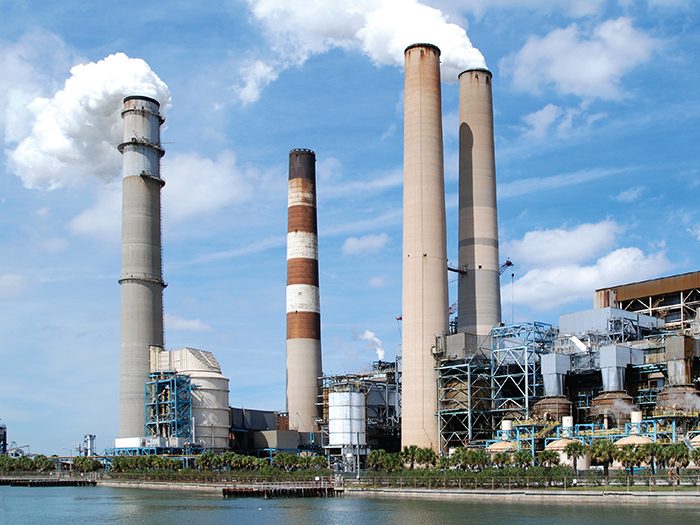Environmental Risk
Changes in Energy Regulation

Even as the Trump administration takes steps to ease environmental regulations and defund the Environmental Protection Agency, insurance and environment experts expect little change in companies’ environmental stewardship or long-term responsibilities.
“I expect companies to stay the course of social and environmental responsibility,” responding to their own corporate cultures, the long-tail nature of environmental claims, tort law and regulations by each state’s Department of Environmental Protection (DEP), said Tom Williams, head, environmental liability, North America, Allianz Global Corporate & Specialty.
“Underwriters will still look for companies to take environmental and health and safety programs seriously,” said Marcel Ricciardelli, lead environmental insurance underwriter, Allied World.
“We look for a history of robust environmental risk management.”
The long-tail nature of environmental liability, said Avram J. Frankel, principal, Integral Consulting Inc., an international science and engineering firm, helps incentivize companies to support strong environmental programs.
“Administrations may end in four years, but environmental liability keeps on going.”
Long policy terms “lock underwriters into risk for the long term,” said Ken Burrell, managing director, Synapse Services LLC. Most of his clients plan accordingly, with 10 to 15 year business plans — exceeding even a two-term administration — that include budgets for environmental controls and risk management.
In addition, he said, “reputational risks are high considerations in business decisions, regardless of regulatory enforcement. Companies don’t want blowback from a blowout.”
What Regulations May Change?
“Expect a focus on the Clean Water Act and Clean Air Act,” Burrell wrote in an email. “If budgets are reduced, there will be fewer resources for enforcement, but reduced regulatory enforcement will not necessarily reduce exposure to loss. If enforcement wanes, expect an increase in litigation from private citizen suits in an effort to drive action.”
The EPA takes the lead in some regulatory arenas, Frankel said, and states lead in others. In some cases, the EPA delegates authority. Enforcement varies by state.
Past administrations’ inconsistent environmental track records confound predictions in this one, he said. New restraints are unlikely under President Trump, who declared in February that environmental regulations are “out of control.”
“It appears that much, if not all, pending rulemaking could be suspended under this administration,” Frankel said.
Final rules take years to promulgate, he said, and normally take years to undo. For example, the Stream Protection Rule — which seeks to protect waterways from coal mining residue and which Congress rolled back in February by invoking the seldom-used Congressional Review Act — was the result of eight years of review and analysis by the states and scientific bodies, said Pat Parenteau, senior counsel, professor of law, Vermont Law School in a National Public Radio interview.
The speed at which Congress acted to undo the Stream Protection Rule introduces “a brave new world for environmental regulation at the federal level,” Frankel wrote in an email.
“We appear to be in a new era, and it will be entirely up to the states to regulate these matters.”
Also “in peril,” said Kevin Haas, partner at Clyde & Co., an international law firm, are federal regulations pertaining to oil and gas exploration, offshore and ocean drilling, fracking, interstate oil and gas pipelines. Regulations that could curtail those operations in the interest of endangered species and national parks may also face rollback.
The administration’s February freeze on new and pending regulations would halt four very nearly finished Energy Department efficiency standards designed to reduce energy use, consumer bills and greenhouse gas emissions, according to the “Washington Post.”
Even in the absence of federal regulation or slowdown of enforcement — which would trigger significant pushback from the agencies themselves — states would continue to regulate, said Frankel, and tort law will continue to pressure companies toward environmental responsibility.
Federal standards usually represent the minimum, said Ricciardelli. Insurers can expect little change in enforcement in states with strong environmental protections, such as California, Washington, Oregon, Massachusetts, New Jersey and New York.
For example, New Jersey’s air standards, said Larry Hajna, press officer, N.J. Department of Environmental Protection, historically exceed the EPA’s, driven by “the need to achieve federal clean air standards in a densely populated state with a lot of cars and industry.”
Even some oil- and gas-producing states have their own strict regulations that “we don’t see changing soon,” said Kevin Sisk, senior vice president, Lockton.
These include Louisiana, where a closely watched lawsuit against more than 90 oil, gas and pipeline companies alleges degradation of wetlands that form a natural hurricane buffer for New Orleans by drilling and dredging canals along the coast.
Claims related to that case may go back 100 years, said Sisk. “Any changes to federal regulations wouldn’t change potential liabilities associated with that lawsuit or with other common industry exposures.”
Counterintuitively, a reduction in exploration and production can trigger a spike in certain claims, said Sisk, when combined with a financially distressed industry.
After commodity prices collapsed and the moratorium on offshore drilling from the 2010 Mocondo Well blowout in the Gulf of Mexico, some companies laid off staff and deferred preventive maintenance, which contributed to pollution releases.
“Any changes to federal regulations wouldn’t change potential liabilities associated with that lawsuit or with other common industry exposures.” – Kevin Sisk, senior vice president, Lockton
“The oil and gas infrastructure was neglected when companies couldn’t explore for new reserves,” said Williams. He speculates that the inverse will happen in the Trump administration.
“Presumably, the pendulum will swing in the other direction in the next administration,” said Haas.
More drilling, mining, exploration, etc., also creates more opportunities for risk of spills, leaks, effusions, contaminations and damage to endangered species, said Haas, but risk management tools and techniques, including new technology, can help prevent loss of product and claims from spills.
Energy companies and carriers can seek technological risk management and insurance solutions. “The Internet of Things contributes to fewer accidents by monitoring temperature, pressure, flow and leaks in pipelines and drill sites where people can’t see,” Haas said.
“Technology could offset adverse impacts from reduced regulation and EPA personnel on the job.” &











